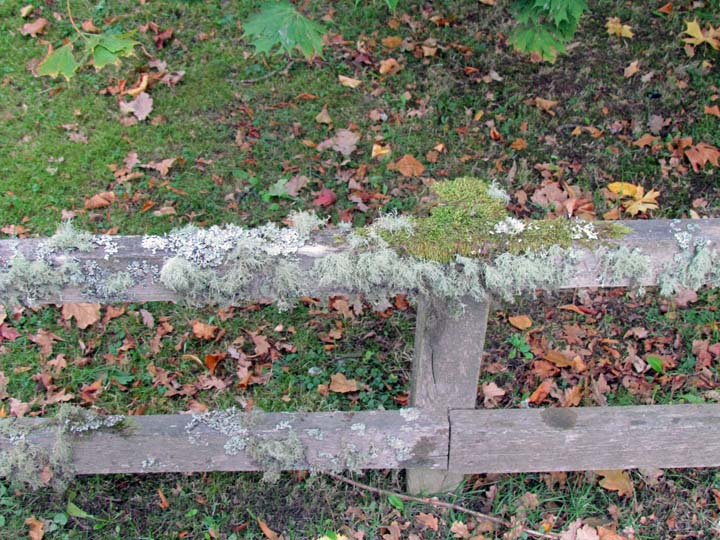
Cawdor Castle
Cawdor Castle is a tower
house set amid
gardens in the parish of Cawdor. It
belonged to the Clan Calder. It still
serves as home to the Dowager Countess Cawdor, stepmother of Colin
Robert Vaughan Campbell, 7th Earl Cawdor and 25th Thane of Cawdor. The castle is perhaps best known for its
literary connection to William
Shakespeare's tragedy Macbeth, the title
character of which was made Thane of Cawdor.
The earliest documented date for the castle is 1454, the
date a building license was granted to William, Thane of Cawdor
(or Calder, as the name was sometimes spelled). However, some portions of the
castle may precede that date. Architectural historians have dated the style of
stonework in the oldest portion of the castle to approximately 1380.
One curious feature of the castle is that it was built
around a small, living holly tree, the remains of which may still be seen in the
lowest level of the tower. Modern scientific testing has shown that the tree
died in approximately 1372 (lending credence to the earlier date of the castle's
first construction).
Shakespeare's play
Macbeth took liberties with the story of the historic Scottish King Macbeth, who ruled Scotland after his forces killed King
Duncan of Scotland in battle.
The play, first written in 1606, drew from somewhat fanciful tales of King
Macbeth written by the monk Andrew
of Wyntoun in Fife,
in his Cronykil
(completed in 1406). Among the elements Shakespeare took from the monk's stories
was the idea of the three prophesying weird sisters.
Although the name Cawdor
will forever connect this classic work of literature to Cawdor Castle, the
castle did not exist during the lifetimes of Macbeth or Duncan, and the events
of the play are almost wholly fictitious. The castle's guidebook quotes the 5th
Earl Cawdor (the 23rd Thane) as saying, presumably with some irony, "I wish
the Bard had never written his damned play!"
Parts of Cawdor date back to the 14th century. The castle became part of the
Campbell "empire" when Muriel Calder, heiress to the castle, was
kidnapped at the age of 12 and married to the Earl of Argyll's son, Sir John
Campbell in 1511. A ghost wearing a blue velvet dress has been reported in the
castle though no one can say whether this is Muriel Calder
The first thing I see is this wooden fence with lichens and the colorful leaves beneath
I'll catch the castle after a couple shots of the scenery

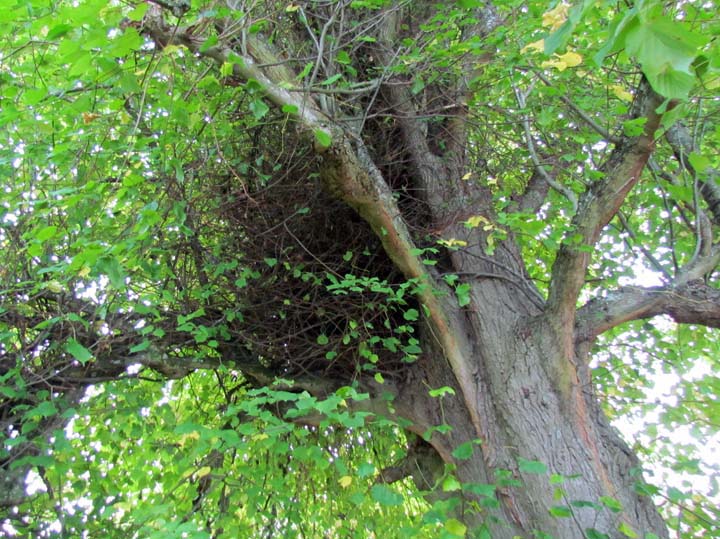
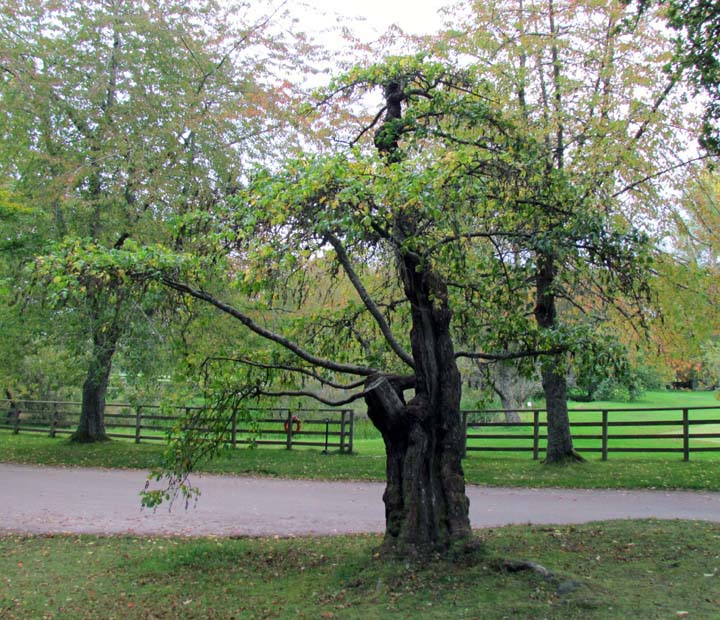
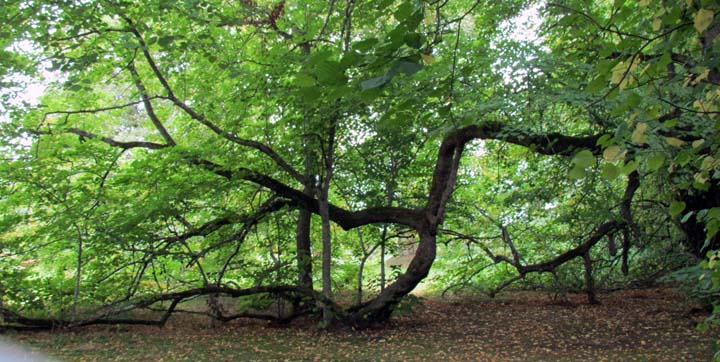
And the castle stand before us
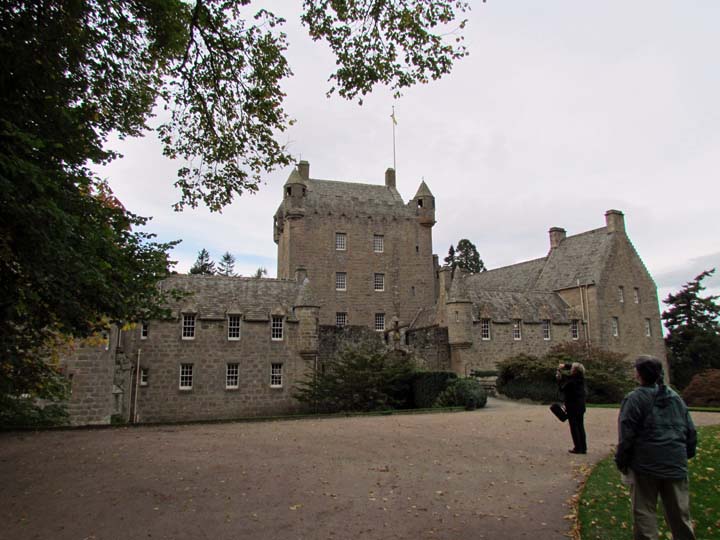
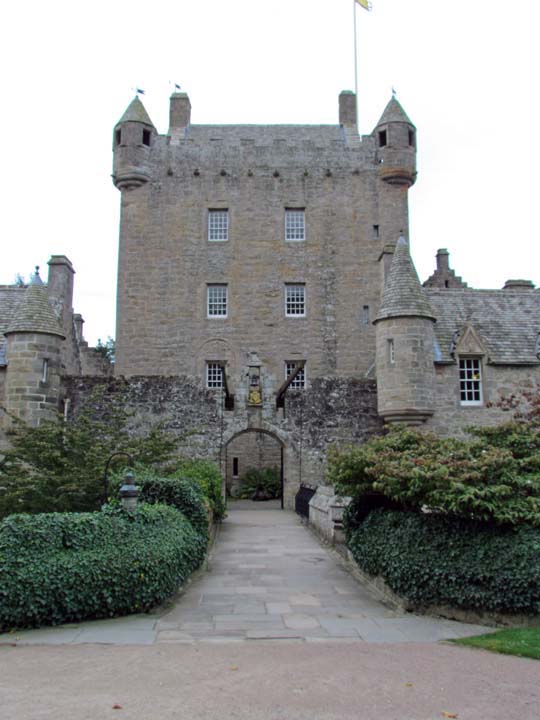
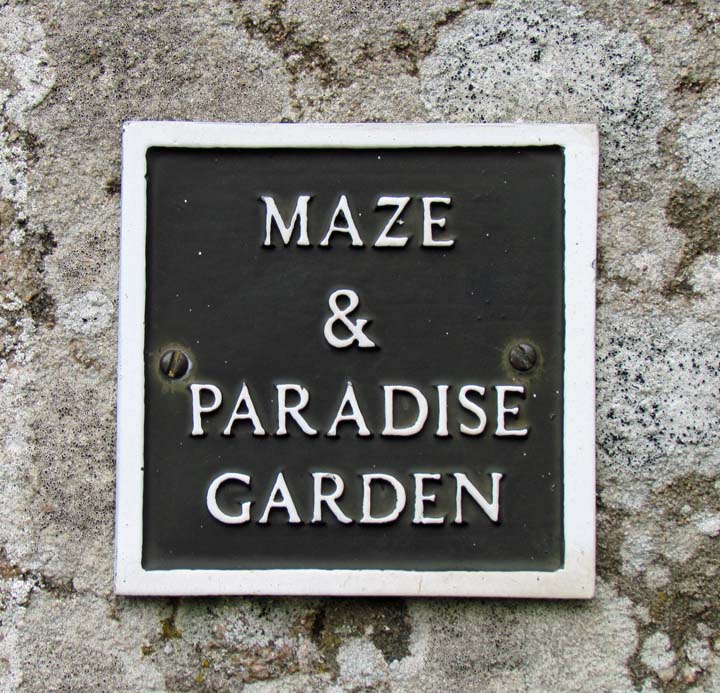
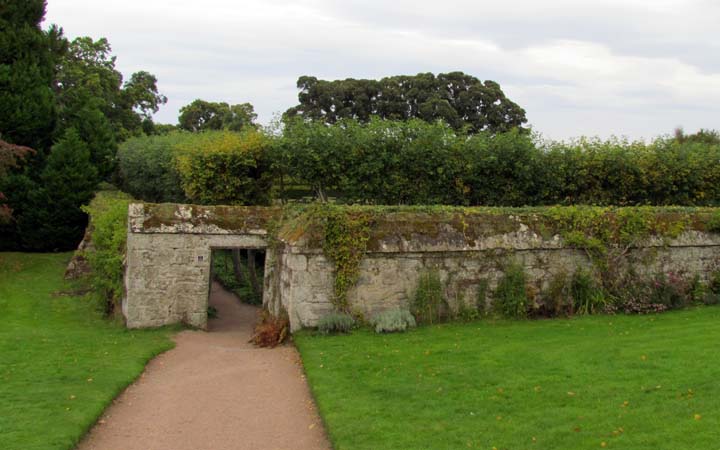
the maze
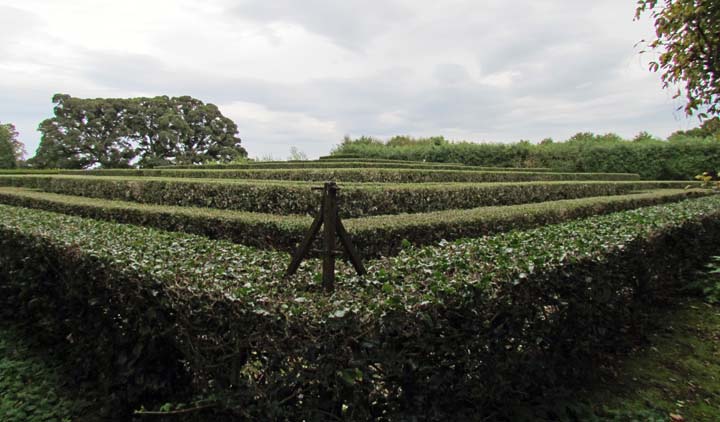
the garden path between trees and wall
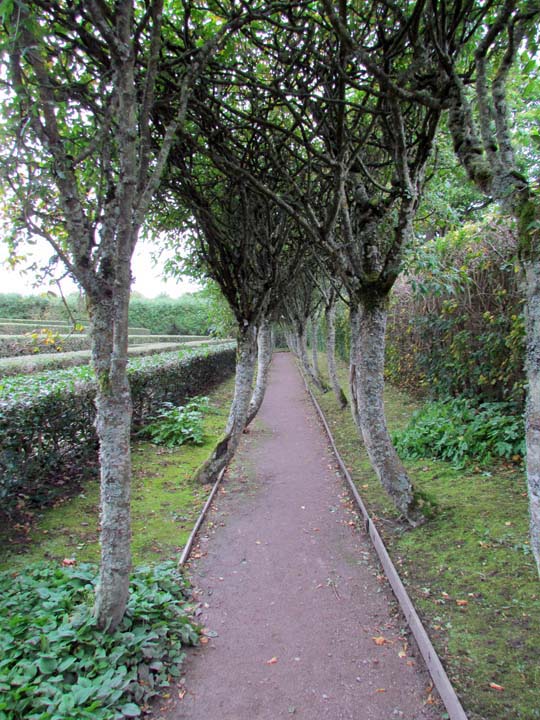
The draw bridge
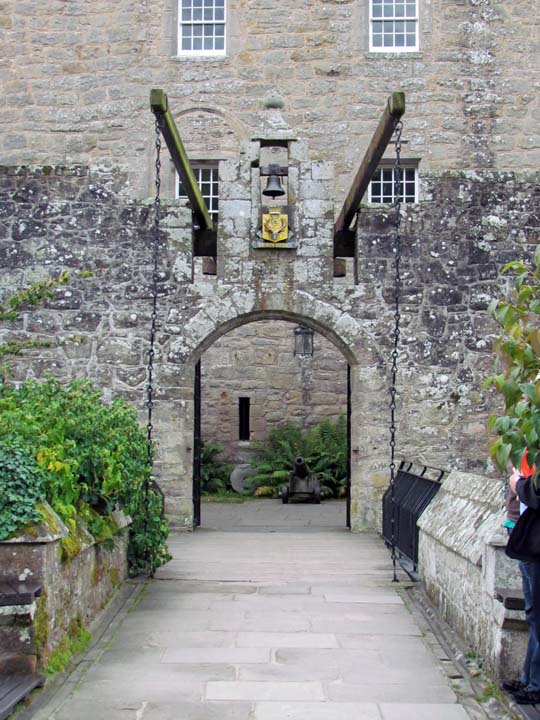
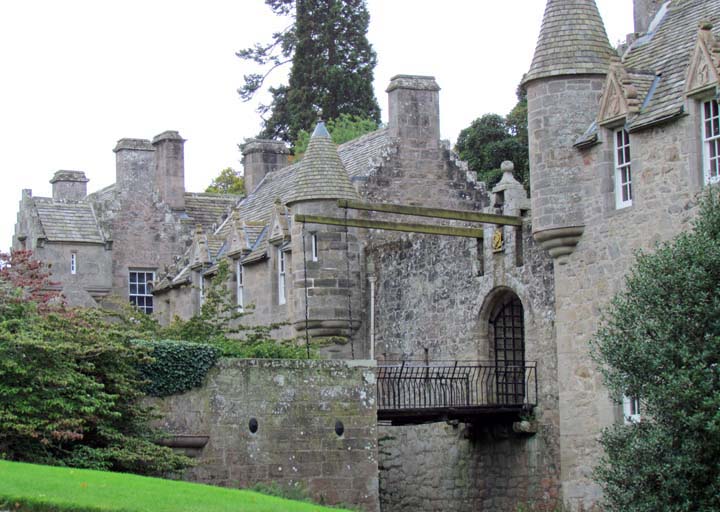
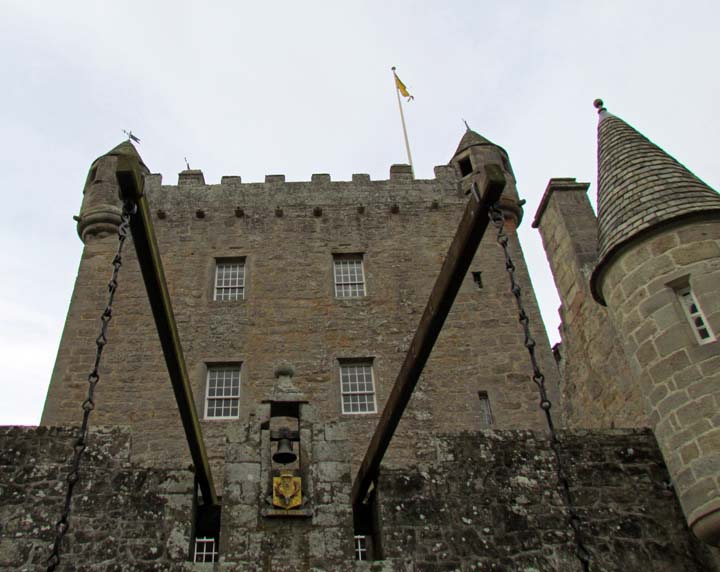
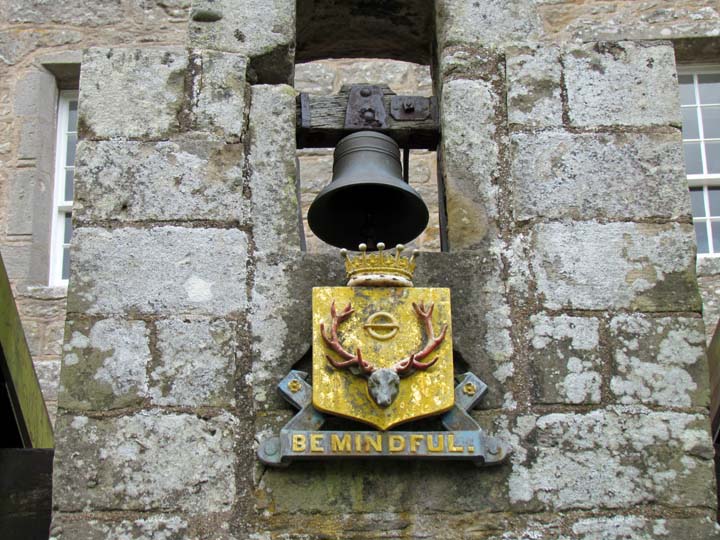
The castle is still occupied, so we enter the lower level
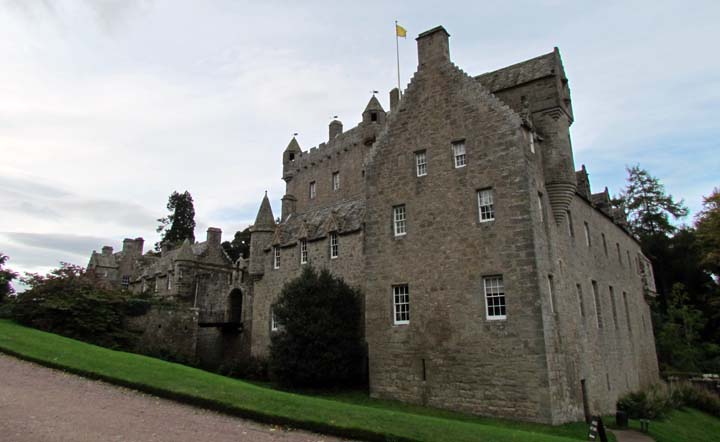
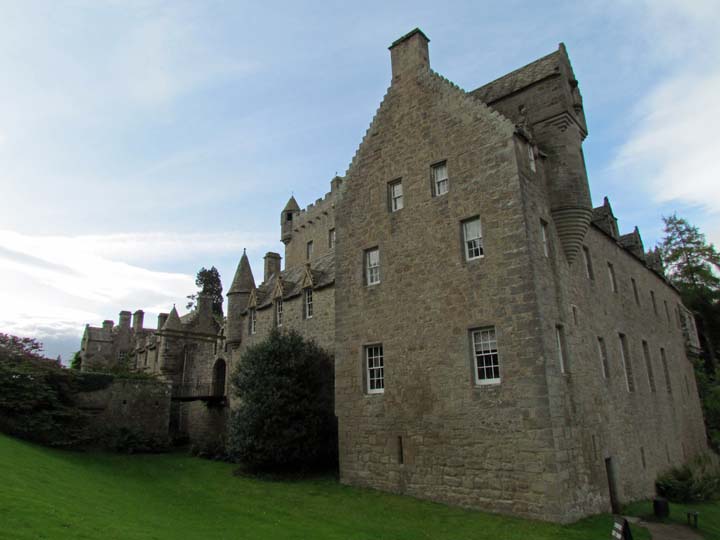
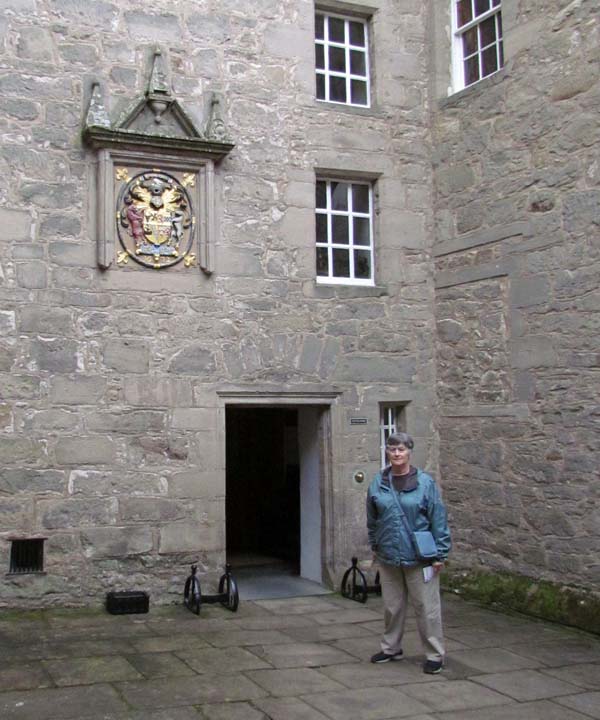
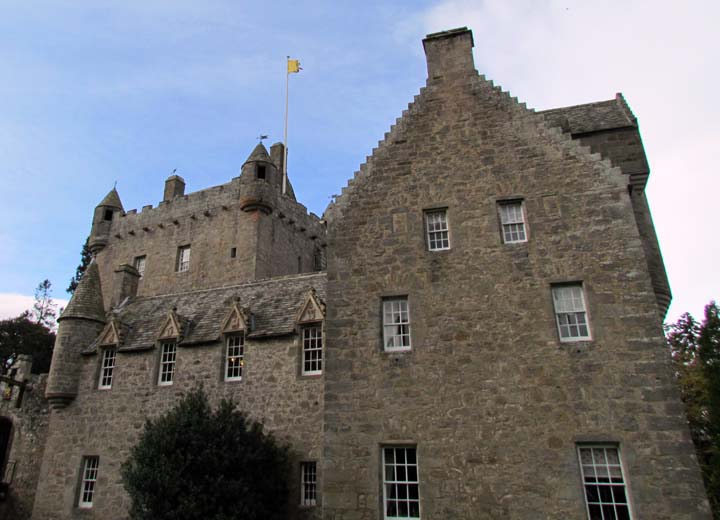
Because the Dowager Countess Cawdor, stepmother of Colin Robert Vaughan Campbell, 7th Earl Cawdor and 25th Thane of Cawdor, who lives here does not want visitors taking pictures within the castle,
the only photos are the beautiful gardens
This wrought iron gate is a work of art
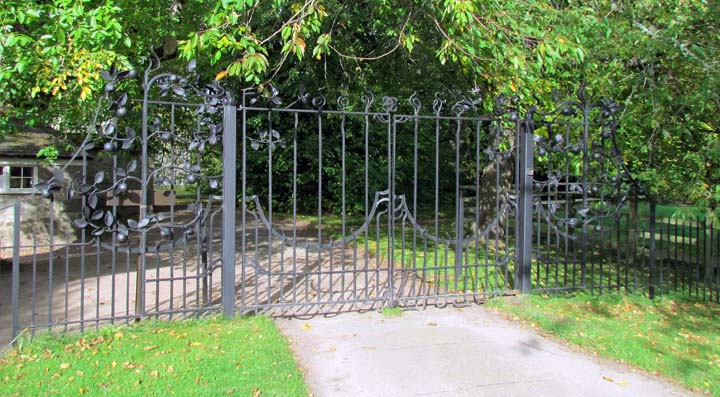
Notice the branches, stems, leaves and apples
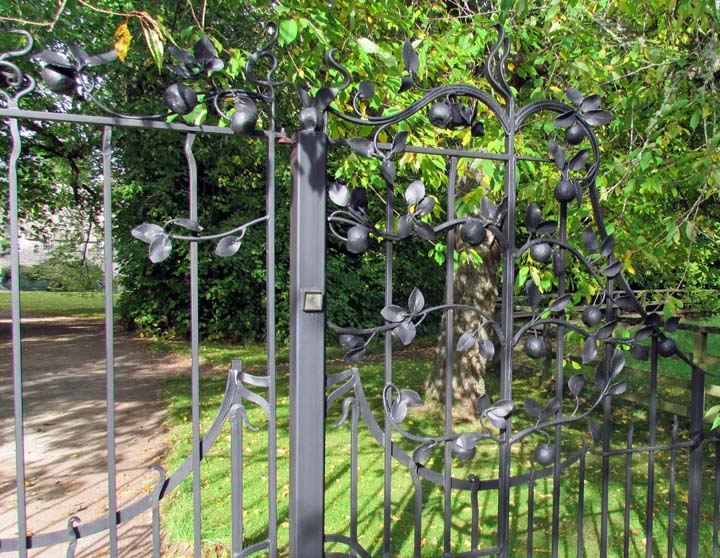
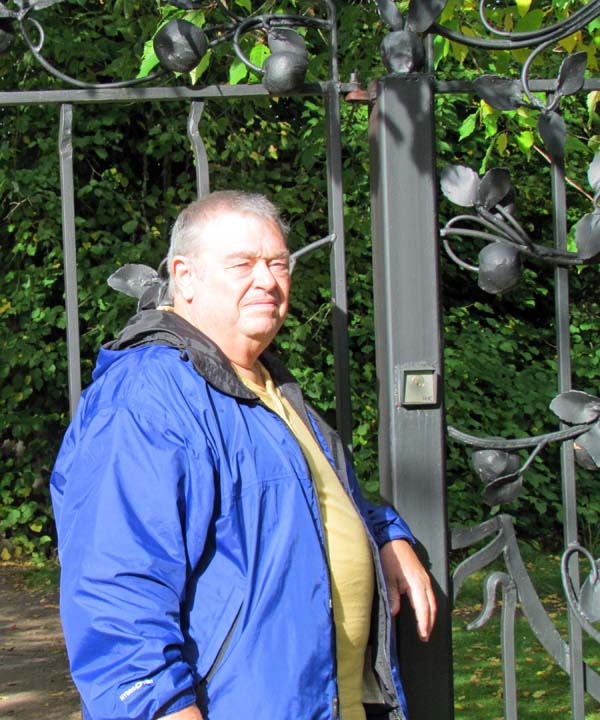
Let's just look at the garden
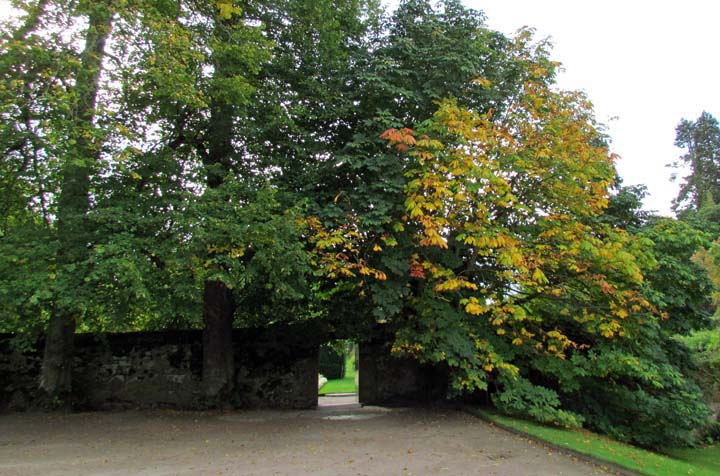
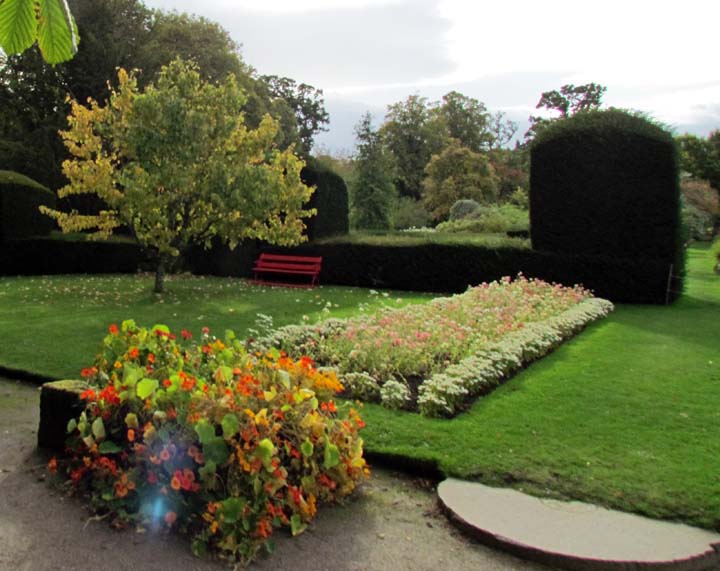
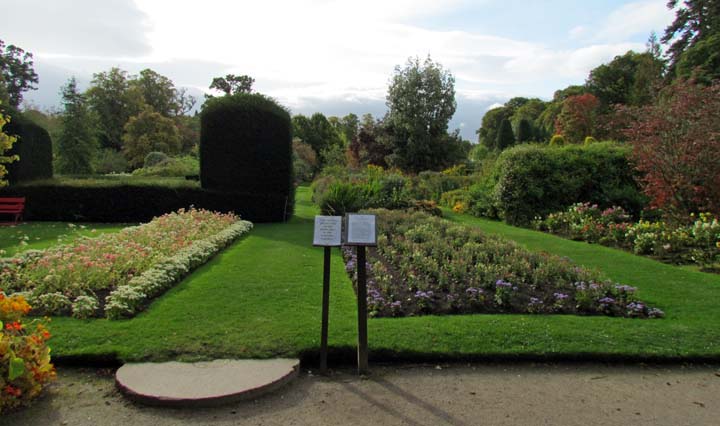
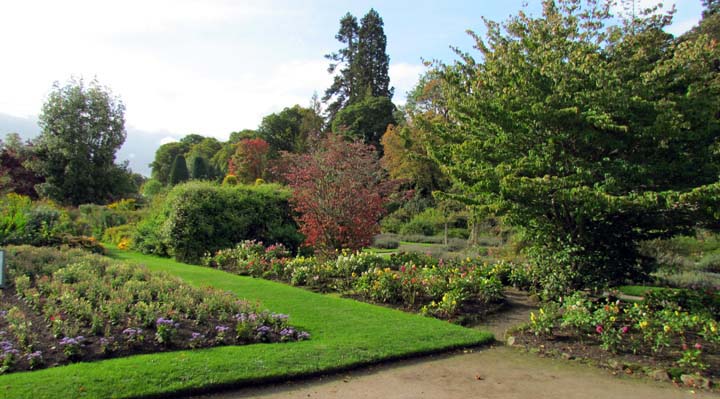
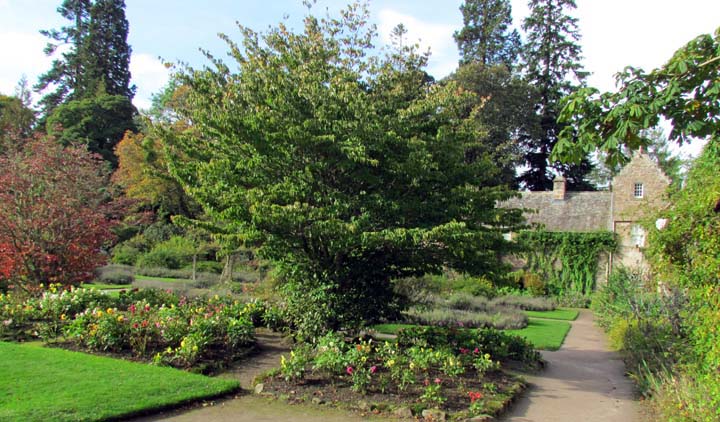
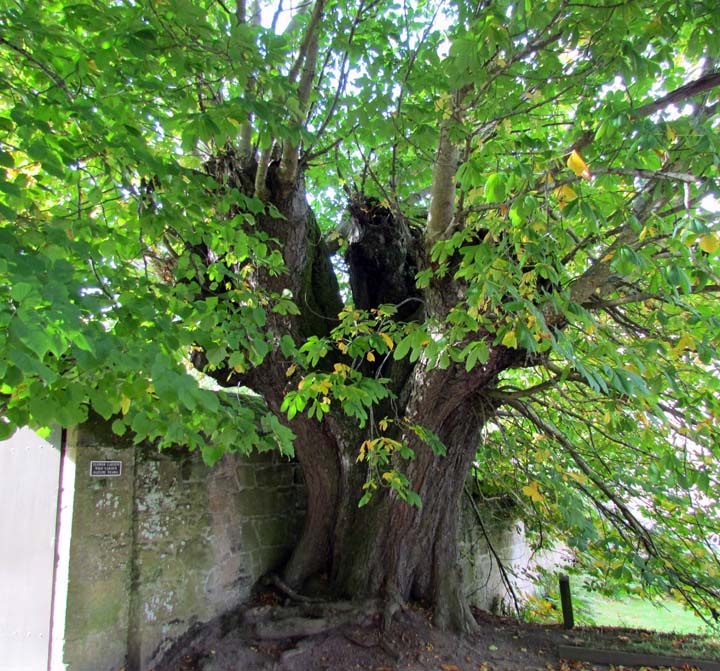
And then, there's the golf course!
I was surprised; as crazy as Scots are about golf,
no-one was playing, nor did it seem the course was much used
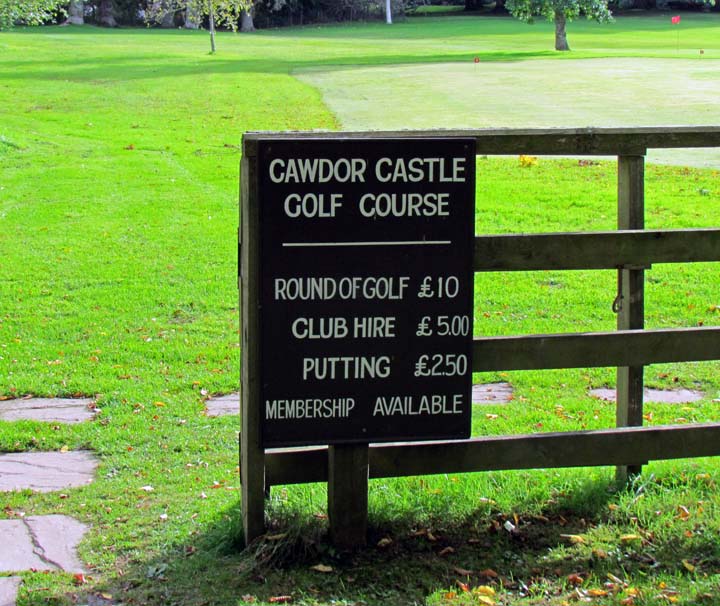
The prettiest Number One Hole I am certain I've ever seen. I had to take pictures of it,
with its tree on the green, from several angles.
I wonder if the remainder of the course is as magnificent?
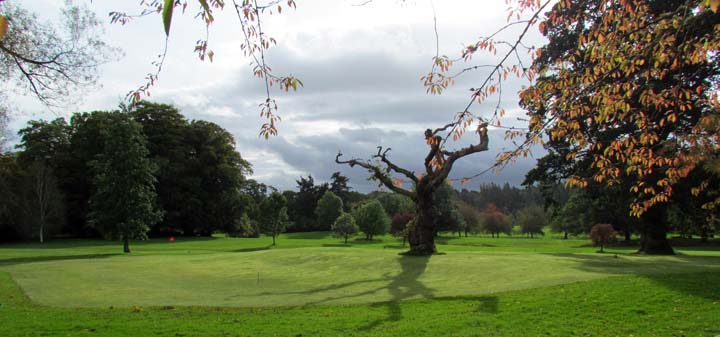
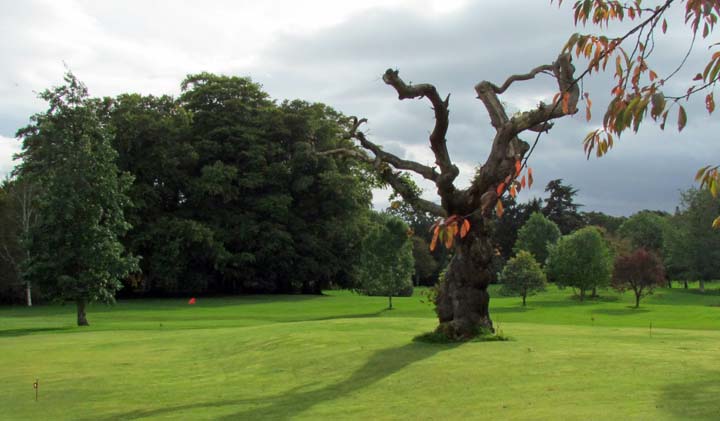
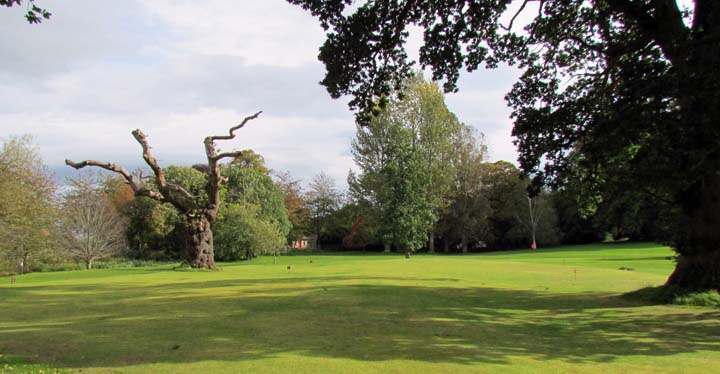
No, I have no idea just why this wagon is here -
I took this shot because it was appealing
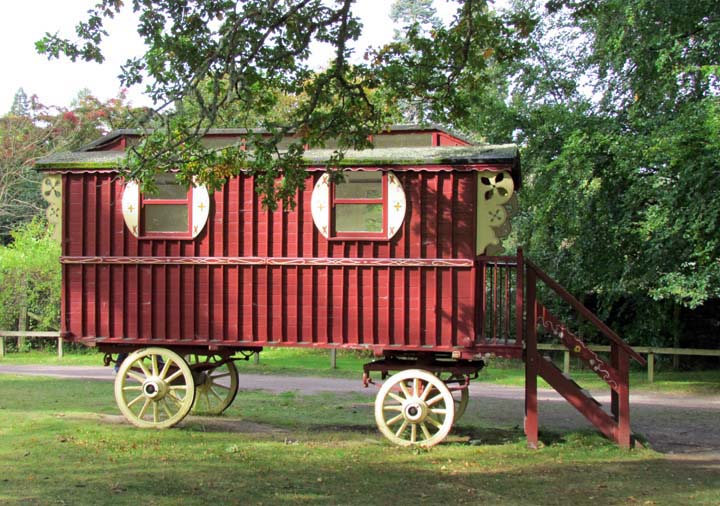
~ ~ ~ ~ ~ ~ ~ ~ ~ ~ ~ ~ ~ ~ ~ ~ ~ ~ ~ ~ ~ ~ ~ ~ ~ ~ ~ ~ ~ ~
And
we leave William
Shakespeare's tragedy of Macbeth behind